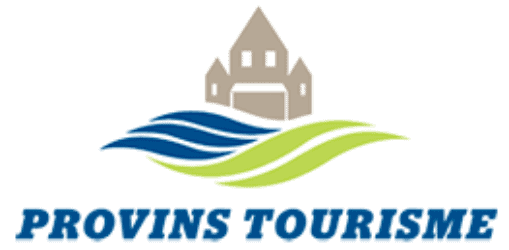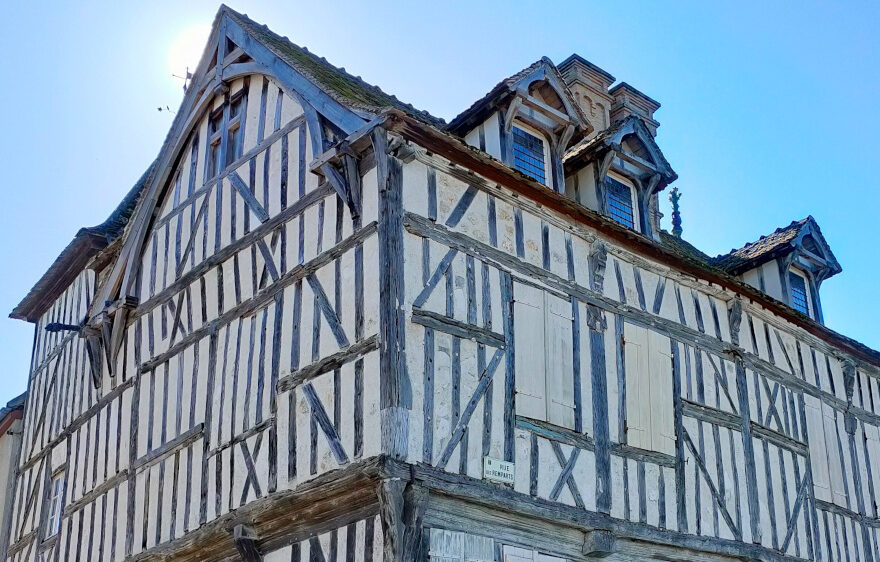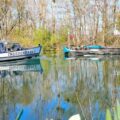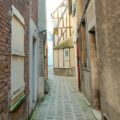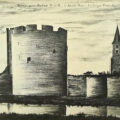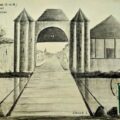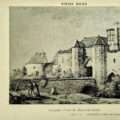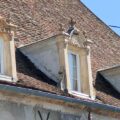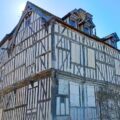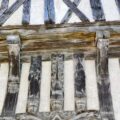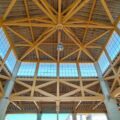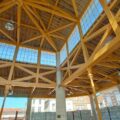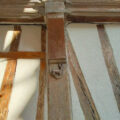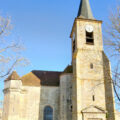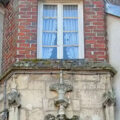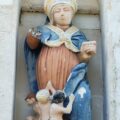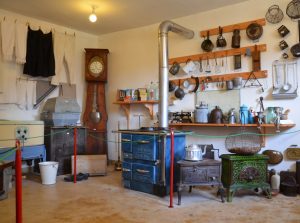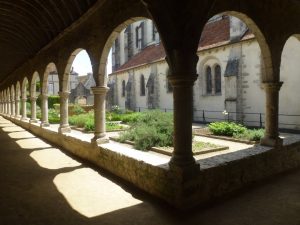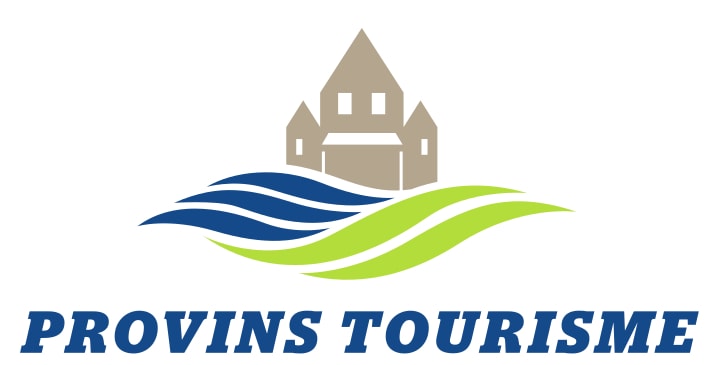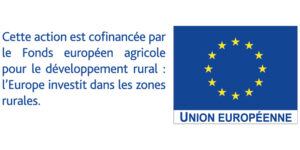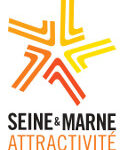Come and discover Bray-sur-Seine, located in the heart of the Bassée-Montois region and 20 km south of Provins.
A town steeped in history, which also offers a beautiful walk along the Seine!
Diaporama
About
How nice it is to live in Bray-sur-Seine… you will be surprised by the number of old houses, timber-framed or in brick, and you will certainly have the chance to greet a quiet barge, which goes down or up this part of the river.
We have put together an itinerary of the most important places to visit, and don’t hesitate to explore the many streets and alleys with evocative names.
First of all, we advise you to go to the Quai de l’Île, extended by the Quai Saint-Nicolas.
Along the way, you will find numerous car parks, the tourist information centre, a service area for camper vans (emptying and drinking water), the river stopover, and the superb “Parc du bord de Seine” with its remarkable trees.
This last one has picnic tables, a playground for children and benches, to enjoy the fullness of the place.
It is necessary to imagine that on this site, and surrounding the whole of the old town as far as “Les Promenades”, stood the ramparts built from 915. A feudal castle, the Big Tower and three fortified gates also ensured the defence of the fief.
Unfortunately, no remains remain, but the engravings available in the slide show section will allow you to appreciate these works.
THE MUST SEES IN BRAY
Let us guide you inside the city, through history…
• Back to the information point, go left until the corner of “Rue du Général Leclerc”.
We invite you to look up and admire a roof with unique dormers. These three stone windows come from the Tuileries Palace in Paris, which was burned and destroyed in 1871.
A beautiful work that has come down to us, with a nod to the fact that they are located on the banks of the Seine, as they were originally and in the direction of the capital..
• If you continue to “Rue du Minage”, you will find a group of two superb 16th century historic houses!
Don’t hesitate to look at the façade of the larger house to admire the half-timbered sculptures of a religious nature, representing in particular the Virgin Mary, the Archangel Gabriel and Saint Nicholas.
You will notice that this patron saint of fishermen and bargemen is very present in the town.
• Go up the “Rue du Minage” to the “Rue Grande”, then turn right to the Bray-sur-Seine covered market hall.
Listed as a Historic Monument, this building is remarkable for its spacious and elegant design, its chestnut frame, which means that there are no spiders, and its skylight on the upper floor, which provides plenty of light
Inaugurated with a big party in 1842, the hall was built by the architect Émile-Jacques GILBERT (1795-1874), awarded the Grand Prix de Rome for architecture in 1822… or perhaps by his brother Narcisse, also an architect.
A magnificent work, which was restored in the 1860s and in 1882: the structure was reinforced with cast iron columns and the slate roof was replaced with zinc, in accordance with the original project.
This entire western part of the city formed the St. John’s district, which also included a port.
Behind the market hall, in the rue Taveau, there was a judicious open passage, now filled in by a house. This allowed foodstuffs to be transported directly to this sales area, which hosted three markets: the calf market, the grain market, and the large Friday morning market, which still takes place there.
On one of the stone pillars hangs a bell that was used in the past in a precise manner: the first sound was at 8 a.m., indicating to the merchants that they could set up shop, the second at 9 a.m., indicating to the customers that they were ready to open, and the third at 11 a.m., announcing that they had to make way for the leveurs!
These merchants set the prices and left for Paris, where they sold the goods.
• Continue along “Rue Grande” to the corner of “Rue Emile Zola” and the house known as “the stag house“, which would have belonged to a gamekeeper.
In the half-timbering, and more precisely on one of the wooden pillars, a stag has been sculpted lying down within a shield.
You will also notice the beautifully carved eaves of the floor just above it.
• Take the Perrin alleyway to reach the Sainte-Croix church square.
Listed as a Historic Monument, the church was built in the 10th century.
By visiting it, you will go through all the eras: Roman, Gothic and Renaissance.
It contains many treasures such as paintings, statues, lecterns, as well as a reliquary containing souvenirs of the martyrs of the catacombs, coming from Paris.
In the choir, some of the stones have carvings and engravings. They come from the old cemetery and were reused for the construction.
If you look up, you will see a starfish, in Latin “Stella Maris”, which represents the Virgin Mary.
• The large white building next to the church is the former hospital, now transformed into the House of Associations.
• If you continue, you will arrive at the level of the “Promenades” mentioned above, and it is here, just on your right, that the famous “Grosse Tour féodale” stood !
• You can follow the “Promenades” or the “rue de l’Eglise” on your left. You will have to take “rue Joseph Bara”, then “rue de la Paix” which will take you to the “Place du Général de Gaulle”.
Opposite the Town Hall, the large brick building is the former Hôtel du Cheval Blanc.
Napoleon and Victor Hugo sat down to breakfast here during their stay!
• Return to “Rue Grande”, and turn right into “rue de la Pêcherie”.
This area was once inhabited by fishermen, and on the square of the same name, a large fish market was held.
• At the corner of the “rue du Four” and the “rue du Palais”, you will enter a small courtyard to discover a major historical element: the window of the Barons’ Palace.
This is the only vestige of the palace of the Dukes of Burgundy which stood in Bray-sur-Seine in the 12th century. Joan of Arc is said to have stayed there on the night of 16 September 1429.
The location is not original, the window has been dismantled and reassembled piece by piece to be preserved.
• Continue along “Rue du Four” and turn right into “Rue du Président Carnot”. At number 14 you will find the statue of Saint Nicolas. The street was once named after the saint.
A mystery surrounds this statue which had disappeared, and reappeared some time later in its place, but repainted!
• At the end of the street, you come out onto the “Quai Saint-Nicolas” and the parc.
We wish you a pleasant visit!
Good to know: the town also has an open-air municipal swimming pool with an exceptional view over the Seine river.
Schedules & Prices
Schedules:
• Free access all year round.
Opening of the tourist information centre:
• From 1 May to 27 September 2025: from Tuesday to Saturday from 9.30 a.m. to 12.30 and from 1.30 p.m. to 5.30 p.m.
• Closed on Sunday an Monday.
Contacts
Quai Saint-Nicolas, 77480 Bray-sur-Seine (facing n°19).
During the closure period, contact the Provins Tourist Office on 00 33 1 64 60 26 26 or by mail: info@provins.net
